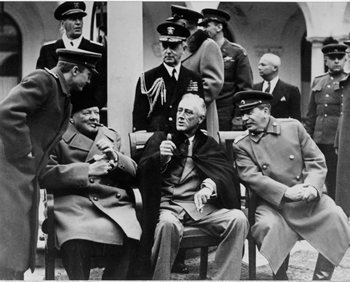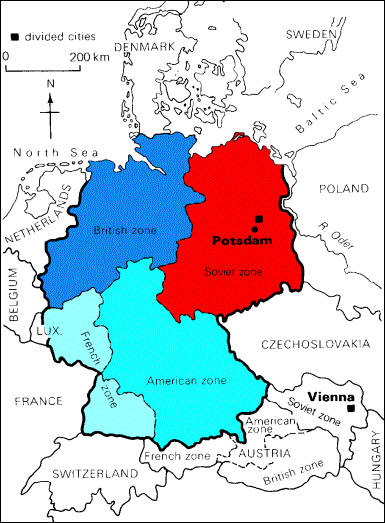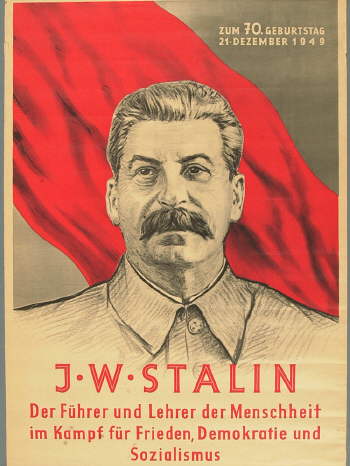|
|
The Cold War |
|
Post WWII
The main issue at Potsdam and for the next two years was who would control Europe. Britain had its chance, so too did France and Germany. Was it now Russia's turn? Or perhaps the United States? There was also the question of what to do with Poland, which had been taken over by Germany in WWII. Everybody wanted Poland. But especially Russia. Historically, Poland had always been the key state needed from which to launch an attack against Russia. Influencing new nations
The Soviets viewed this demand as unacceptable for it indicated that the United States was really taking too heavy a hand in determining what nations ought to adopt what specific form of government. In response, Stalin went on to create what Winston Churchill, never at a loss for words, dubbed the Iron Curtain. In a famous speech Churchill said:
By 1946, the United States and Britain were making every effort to unify all of Germany under western rule. The Soviet Union responded by strengthening its grip on Europe by creating satellite states in 1946 and 1947. One by one, communist governments, loyal to Moscow, were set up in Poland, Hungary, Romania, and Bulgaria. Stalin used Soviet communism to dominate half of Europe. Why Stalin did this might not be clear. Was he trying to build an international communist movement beginning in eastern Europe? Or, was he simply trying to protect his borders from any intervention on the part of the United States or the allies? The climax came in March 1948. A communist coup in Czechoslovakia overthrew a democratic government and the Soviet Union gained a foothold in central Europe.
USSR in Economic Need With World War Two at an end by the end of the summer of 1945, the United States knew that the Soviet economy was in a state of near-collapse. The Soviet Union had lost at least 20 million souls during the war alone and perhaps another 20-30 million from Stalin's decade of purge trials. Thirty thousand factories and forty thousand miles of railroad tracks had been destroyed. All the industrialization that Stalin had promised and delivered to his people with the Five Year Plans had been lost. Truman realized this and remained confident that the United States was in the stronger bargaining position. He surmised that the Soviets had to come to the United States for much-needed economic aid. As early as January 1945, FDR had already denied the Soviet request for a six billion dollar loan. In the Spring of 1945, Congress agreed that they would not allow Lend-Lease for any post-war reconstruction in Russia. This was obviously a major shift in policy for under the Lend-Lease Act of 1941, the United States had shipped enormous quantities of war materiel to the Soviets, including almost 15,000 planes, 7000 tanks, 52,000 jeeps and almost 400,000 trucks. |
 When
we turn to the more immediate and tangible causes of the cold war, we must
begin with
When
we turn to the more immediate and tangible causes of the cold war, we must
begin with  The
United States upheld the principles of self-determination, principles
declared in Woodrow Wilson's
The
United States upheld the principles of self-determination, principles
declared in Woodrow Wilson's
 Given
the experience of World War Two itself, this division of Europe was
perhaps inevitable. Both sides wanted their values and economic and
political systems to prevail in areas which their soldiers had helped to
liberate. If both sides had accepted these new spheres of influence, a
cold war might never have occurred. But the nations of western Europe and
the United States still had Hitler on their minds and they soon began to
see Stalin as a similar threat.
Given
the experience of World War Two itself, this division of Europe was
perhaps inevitable. Both sides wanted their values and economic and
political systems to prevail in areas which their soldiers had helped to
liberate. If both sides had accepted these new spheres of influence, a
cold war might never have occurred. But the nations of western Europe and
the United States still had Hitler on their minds and they soon began to
see Stalin as a similar threat.